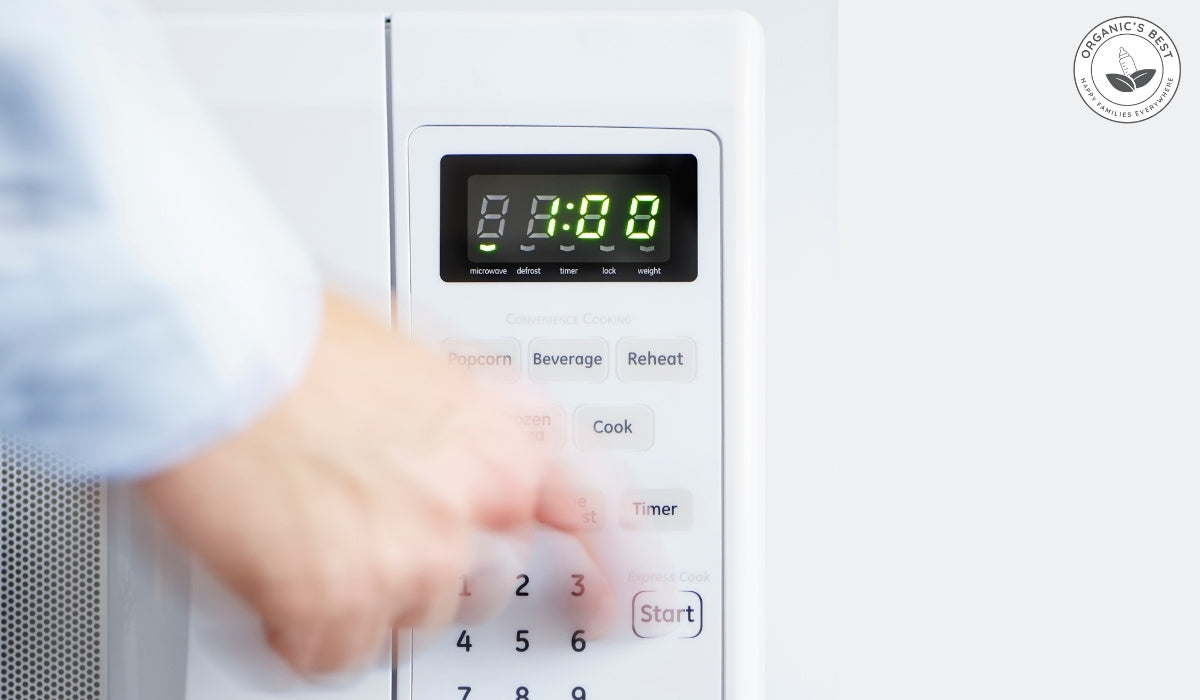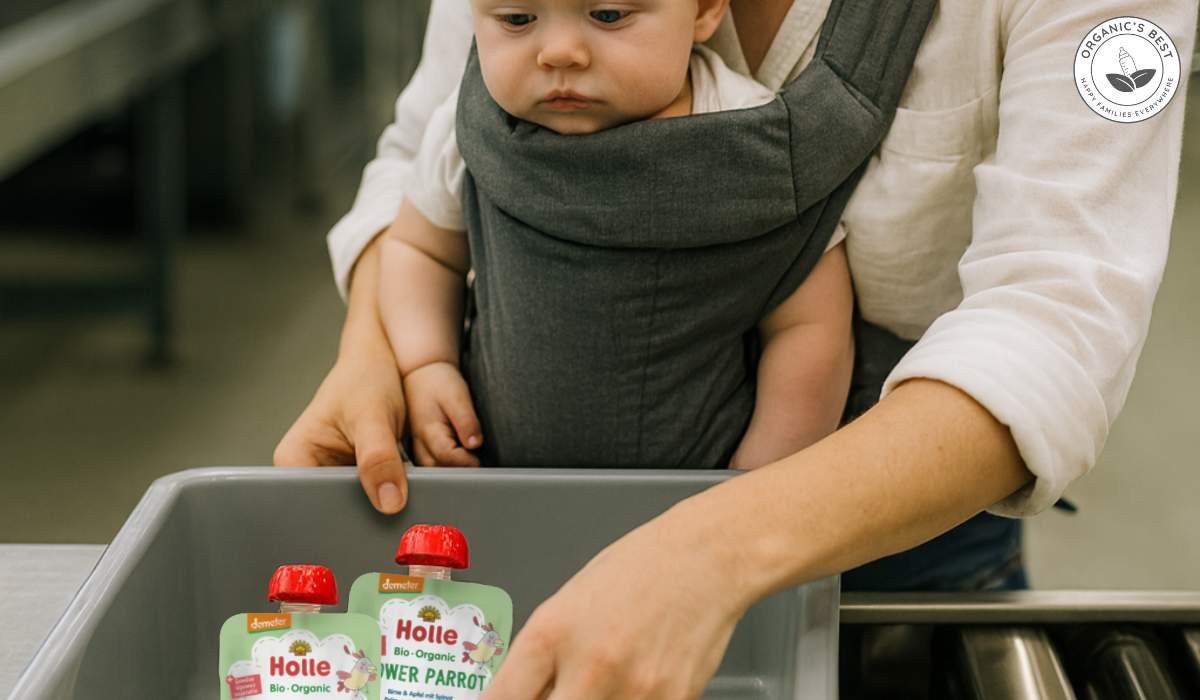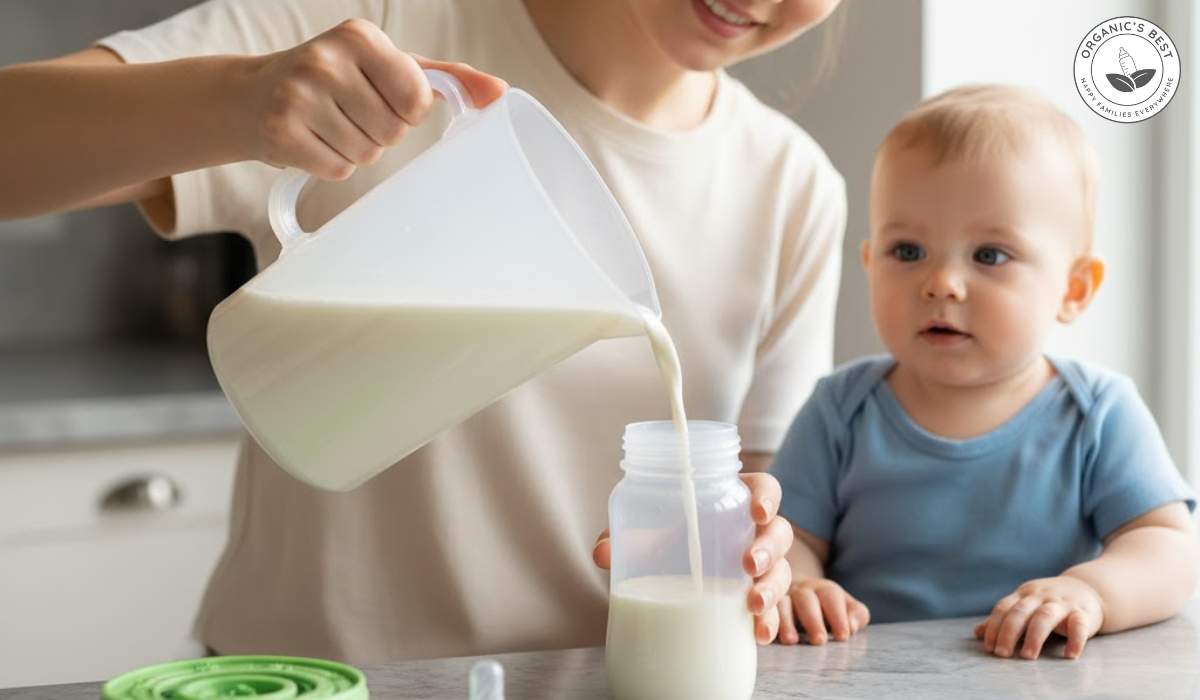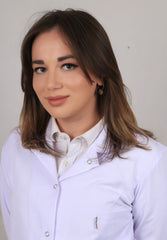Click to Get 2 FREE Boxes/Cans
Only New Customers! Click HERE to Get 2 Extra Boxes/Cans for Free With Your First Order.
BABY FORMULA
Offering new parents top-quality European infant formula from renowned brands like HiPP, Holle, Kendamil, and more. If you’re uncertain about which product to choose, our Formula Finder can help you make the best decision for your baby.
Baby Food
Offering new parents a premium selection of European baby foods, including jars, pouches, cereals, and snacks from esteemed brands like HiPP and Holle.
Can You Microwave Formula? Safety Concerns and Alternatives
by Agustina Fernandez November 12, 2024 7 min read

As a parent, you're juggling a million things: diaper changes and, of course, the elusive sleep schedule. So, finding ways to simplify life wherever you can makes perfect sense, but the reality is that some corners are not worth cutting.
While preparing a bottle in a hurry you may have asked yourself the common question, can you microwave formula? We know that microwaving baby bottles might seem like a quick and easy solution for heating formula, but is it safe?
Unfortunately, it's not. The good news is that there are plenty of safe ways to warm a bottle that protects your baby's health.
Let's explore why microwaving isn't recommended and safer alternatives to warm your baby's bottle with peace of mind.
Table of Contents
- Advantages of Warming Formula
- What Temperature Should a Baby Bottle Be?
- Safety Risks of Microwaving Formula and Baby Bottles
- How to Warm up Formula & Baby Bottle: Alternatives to Microwaving Milk
- How to Warm Ready to Feed Formula?
- FAQs on Heating Formula
- Conclusion: Can You Microwave Baby Bottles & Baby Formula?
Advantages of Warming Formula
You've probably noticed that babies often prefer warm bottles, and let's be honest-a content baby means a happy parent! Warming formula can make a real difference during feeding time.
There's just something about a cozy, warm bottle that feels right to babies- but the benefits of warming formula go beyond just comfort.
Let's examine how warm formula can benefit your baby's body and mind, promoting calm, soothing feeds and digestive ease.

Calming and Relaxing Effect
A warm bottle can feel like a gentle hug for your baby's tummy. It helps soothe them, mimicking the comforting temperature of breast milk, which is a huge plus if your little one is transitioning from breastfeeding.
This warmth can make all the difference, especially during those nighttime feeds, helping your baby drift back to sleep peacefully.
Helps with Tummy Troubles
Digestive issues like colic, gas, and reflux are all too common during a baby's first year. Warming formula can help ease these challenges by supporting smoother digestion and gentleness on your baby's belly.
The warmth relaxes the stomach, making feedings flow more comfortably and reducing the chances of post-bottle discomfort.
More Similar to Breast Milk Temperature
For babies transitioning from breastfeeding, warming formula to a similar temperature can make the switch much easier.
Breast milk comes in at a body temperature of around 37°C / 98.6°F, which feels natural for most babies. It should feel lukewarm or neutral to the wrist, neither cool nor hot. A warm bottle can help ease the change, offering a sense of comfort and familiarity.
What Temperature Should a Baby Bottle Be?

The rule regarding bottle temperature is simple: aim for body temperature, around 98.6°F (37°C).
A bottle that's too cool might not appeal to your baby, while one that's too hot can risk burns or discomfort.
Think about taking that first sip of scalding hot coffee or tea; babies feel the same way and are even more sensitive to temperature than we are.
The formula should be heated to a comfortable temperature, and it should be tested on the inside of your wrist before being offered to your baby to ensure it's just right.
Safety Risks of Microwaving Formula and Baby Bottles
While the microwave may be your go-to for reheating everything else, formula and baby bottles are better left out.
Microwaving has a few safety risks that make it a bad idea for warming formula.

Dangerous Hot Spots: Microwaves don't heat evenly, so while one area might be the perfect warmth, another could be boiling hot.
The result? Hot spots that can burn your baby's sensitive mouth and throat. No one wants feeding time to end in tears or an unexpected trip to the doctor.
Boiling Hazards: Even a few seconds in the microwave can bring formula close to boiling. Babies shouldn't have scalding hot milk; they need something close to body temperature.
The microwave heats too quickly, so it's easy to overshoot that cozy, safe warmth and end up with something dangerously hot.
Loss of Nutritional Value: Baby formula is carefully designed to provide the right mix of nutrients. A microwave baby bottle is subjected to overheating, which can damage some nutrients, making it less effective as a complete source of nutrition. While not all nutrients will degrade quickly, certain vitamins (like vitamin C) are more susceptible to high temperatures.
The microwave is especially risky because it heats so fast, potentially degrading the fragile nutrients your little one needs to thrive.
Chemical Concerns with Plastic: Even if your bottle is labeled microwave-safe, that doesn't guarantee it's safe for your baby.
High heat can cause chemicals in plastic bottles like BPA or phthalates to leach into the formula, which isn't something you want in your baby's body.
Even microwave-safe plastics can release small amounts of chemicals when heated, so it's better to avoid the risk altogether. Many baby bottles today are BPA-free, but heating them to high temperatures could still cause other chemicals to leach, so parents should not just rely on “BPA-free” labels as a safeguard. Even with glass bottles, microwaving is still discouraged due to uneven heating.
How to Warm up Formula & Baby Bottle: Alternatives to Microwaving Milk
Luckily, there are safe, effective ways to warm formula without a microwave.
Here's a look at some options on how to heat up milk that are easy and reliable:
Baby Bottle Warmer
These devices are practically a lifesaver for warming bottles. Designed to heat milk evenly, bottle warmers can bring formula to the perfect temperature every time.
Many models even have a timer and automatic shut-off, which is ideal for the sleep-deprived.
Just make sure to check the instructions and temperature settings, as some warmers vary in how they work.
Warm Water Bath
This is one of the oldest (and easiest) methods. Simply fill a bowl or cup with warm water and let the heating bottle sit for a few minutes.
This method heats the milk gradually and evenly, eliminating hot spots.
Once the bottle feels warm to the touch, shake it a little to make sure the warmth is evenly distributed, and test it on your wrist before serving. Remember to dry the bottle’s exterior before feeding to prevent slips or drips.
Stovetop Method
This is another common method to heat a bottle. Simply heat a pan of water, remove it from the stove, and place the bottle in the warm water.
It's essentially the same as a water bath, but you're using stovetop heat. Be sure not to submerge the bottle's nipple to avoid water contamination in the formula. Like the water bath, this heats gradually and safely.
Each of these methods allows you to control the temperature without risking hot spots, burns, or nutrient loss. Plus, it doesn't add any extra chemicals or surprises to your baby's bottle!
How to Warm Ready to Feed Formula?
Warming ready-to-feed formula follows the same rules as powdered or concentrated formula.
The main difference is that ready-to-feed formula is already mixed, so using it cuts a step out of formula preparation by not having to mix the powder or liquid concentrate with water.
So, for heating baby formula in this case, you can use a bottle warmer, warm water bath, or the stovetop method to reach the ideal temperature.
FAQs on Heating Formula
Here are the answers to some of your most asked questions about heating formula.
Does Microwaving Formula Destroy Nutrients?
Yes, if you microwave milk it can destroy certain nutrients. Microwaving can degrade heat-sensitive vitamins (e.g., vitamin C, and some B vitamins). Formula is designed to provide precise nutrients for your baby's growth, and high heat in microwave formula can destroy some of those important vitamins and minerals.
When deciding how to warm baby bottle, it's best to stick to gentler heating methods to preserve the formula's nutritional value.
How Long is Formula Good for After Heated?
Once warmed, formula can sit out for up to 2 hours, but once your baby begins feeding, it should be used within 1 hour.
If your baby doesn't finish it within that time, discard it. Formula left out too long can start growing bacteria, which isn't safe for babies.
Reheating it isn't a great idea either-freshly warmed is best for both safety and taste.
How Many Times Can You Warm up Formula?
Only once. Reheating formula increases the risk of bacteria growth, which could upset your baby's tummy.
If your baby didn't finish the bottle within that 1 hour window, it's best to toss the leftovers and start fresh. Waste can be frustrating, but your baby's health is worth the extra effort.
Conclusion: Can You Microwave Baby Bottles & Baby Formula?
So, can you microwave formula? In short, no-microwaving formula or baby bottles is a shortcut that's not worth the risk.
Between dangerous hot spots, potential nutrient loss, and the risk of chemicals from plastic, there's enough to make any parent rethink the microwave.
Instead, stick to safe, tried-and-true methods on how to heat up formula, like baby bottle warmers, warm water baths, or the stovetop method.
These methods let you heat formula gently and evenly, ensuring every sip is safe and comfortable. As tempting as that microwave may be, your baby's tummy-and safety-will thank you for going the extra mile.
|
Disclaimer: Please be aware that this information is based on general trends in babies, and it is not medical advice. Your doctor should be your first source of information and advice when considering any changes to your child’s formula and when choosing your child’s formula. Always consult your pediatrician before making any decisions about your child’s diet or if you notice any changes in your child. Breastfeeding is the best nutrition for your baby because breast milk provides your child with all the essential nutrients they need for growth and development. Please consult your pediatrician if your child requires supplemental feeding. |
Agustina Fernandez
Dr. Agustina Fernandez earned her medical degree from the prestigious Universidad Nacional de Córdoba, Argentina. With a deep-rooted passion for pediatrics, Dr. Fernandez is currently on the path to specializing in children's healthcare. Recently, she has delved into the vital field of infant nutrition. Her research interests include breastfeeding, infant formula, and baby food in little ones’ formative years. Dr. Fernandez's commitment to this area of study underscores her dedication to ensuring the health and well-being of children from their earliest days.
Leave a comment
Comments will be approved before showing up.
Also in Organic Infant Nutrition and Health Blog

Everything You Need To Know About Winter Pregnancy: Essential Tips for Moms-to-be
by Agustina Fernandez December 16, 2025 8 min read
Read More
Can You Bring Baby Food Pouches on a Plane? Essential Tips for Parents
by Agustina Fernandez December 09, 2025 7 min read
Read More
The Formula Pitcher: Is It Safe To Make A Whole Pitcher Of Baby Formula?
by Agustina Fernandez December 02, 2025 8 min read
Read More
Reviewed by Dr. Bardha Citaku, MD
-

Dr. Bardha Citaku: Medical Reviewer of Organic's Best Blog
Dr. Bardha Citaku completed her medical studies at the University of Prishtina in Kosovo, where she began her journey into the field of medicine. She has since developed a career in medical research, contributing to projects with notable organizations, including the World Health Organization (WHO).
